
Much has been written about the benefits of situating math in a variety of contexts ranging from board games to the mundane routines of daily life. Narrative provides another rich context for and powerful entry into mathematical topics of all kinds. Hearing and telling stories is a universal way that humans bring sense and coherence to the disparate elements of their lives; stories take us beyond the limitations of our own experiences and points of view. Cognitively, the embedding of information in narrative form has been shown to support both memory and conceptual understanding, as narrative structures such as plot and character create and reveal patterns among otherwise disconnected pieces of information. Emotionally, the unique power of a good story to motivate and engage learners is recognized and celebrated by anyone who lives or works with children.
Seen through a mathematical lens, an aptly chosen text has the potential to trigger and support mathematical investigations into the workings of the physical world and our interactions within it. Though the detailed particularities of stories may contrast strongly with the generalized abstractions of mathematics, there are certain structural commonalities. Stories and math are each driven by internal logic. Both stress connections and patterns, engage the imagination (both hypothetical “as if” thinking and visualization skills), and encourage perspective taking, causal thinking, sequencing and spatial organization. Finally, stories and math problems both require a degree of significance beyond themselves, something that makes them worth telling or figuring out in the first place.
In a video-recorded discussion, Oxford University mathematician Marcus du Sautoy, offers a compelling metaphor: “Mathematicians are storytellers. Our characters are numbers and geometries. Our narratives are the proofs we create about these characters.”
In a short video made for the National Council for Teachers of Mathematics Sarah Delano Moore expresses a similar idea in more pedagogic terms, speaking of plotlines such as adding/subtracting or conflict and its resolution as exemplified in mathematical problems and solutions. Arguing that narrative effectively brings together physical and contextual mathematical representations, she claims that “the story is the math” and strongly eschews the use of “naked numbers” (decontextualized computation problems) in teaching young children.
EARLY NARRATIVE PREPARES CHILDREN FOR MATHEMATICAL LEARNING
One interesting study showed that preschoolers’ storytelling performance, especially the ability to relate events and shift among characters’ perspectives, predicted their math scores two years later (O’Neill, Pearce, and Pick, 2004). The authors suggest that early narrative experience in itself may help prepare children for the mathematical learning they will encounter in school. Math education researchers Casey, Erkut, Ceder, and Young (2008) studied the more direct effects of storytelling on spatial reasoning in two kindergartens, comparing results for children involved in 8 sessions of decontextualized puzzle activities with the learning of children who encountered the same activities in a story context. They found that the storytelling condition made a significant difference, with a particularly strong effect for girls and children from non-mainstream cultural backgrounds, confirming the idea that narrative contexts may offer important support to children engaged in mathematical tasks.
STORIES BRIDGE CULTURAL DIFFERENCES IN MATH THINKING
From an equity perspective, It has been suggested that story is a natural way to tap into students’ existing funds of knowledge and bridge cultural differences in how children think about math. In making sense of the natural world, traditional tales across many cultures raise mathematical questions. In Canada, infusing Indigenous culture, story and knowledge into story-based math and science programs has had marked success with Indigenous learners. For example, the “Math Catcher” program developed at Simon Fraser University includes an engaging series of short video stories for children featuring “Small Number”, a First Nation boy whose everyday activities and challenges raise intriguing mathematical questions.
STORIES HELP CHILDREN SEE MATH IN CONTEXT
Using published children’s literature (trade books) in mathematics teaching allows children to see math in contexts beyond their own familiar worlds and deepens their appreciation of its value in their own and others’ lives. A variety of research has found that using children’s literature to teach math increases achievement, vocabulary and overall interest throughout the elementary years. It deepens conceptual understanding, triggers extended talk about math, enhances numeracy and reasoning, reduces math anxiety and builds a positive attitude toward mathematics.
Considering the vast array of trade books for children, how can a parent or educator begin to select and use books to encourage mathematical thinking? Such books may include either explicit math content, in which mathematical concepts or problems are a clear focus of the story, or embed implicit math that is less the overt point of the story. There are also stories that depict situations that are not inherently mathematical but can plausibly launch mathematical investigations.
Stories shouldn’t be used as pretexts for doing mathematics. If the narrative context genuinely matters, then children need to experience the story as a whole before breaking it up into its parts, whether mathematical or other. When they are allowed to listen uninterrupted as a story moves towards its natural conclusion – to become transported into the narrative world – they are far more likely to fully engage in the mathematical questions that follow. At its best, a multi-levelled narrative introduces elements of play, imagination, and wonder that captivate an audience and awaken a spirit of curiosity and discovery.
A few simple guidelines to help with book selection:
- The story and illustrations must stand on their own as worthwhile. A shell of a story whose sole purpose is to sugar-coat a mathematical idea is unlikely to meaningfully engage anyone.
- The mathematics must have intrinsic value as well. It should engage the child in authentic problem-solving that builds conceptual understanding or motivates productive practice.
- The mathematics should naturally flow from the narrative context. There is little gained from posing an artificial math problem with no genuine connection to the story.
- All the aesthetic dimensions of a high quality children’s book should obtain: evocative, rhythmic writing; artful illustrations that complement or counterpose the text; compelling plot, credible characters, vivid setting; and so on.
TRADE BOOKS WITH MATH IDEAS
These are a few examples of trade picture books that invite mathematical extensions. All have cultural dimensions and will appeal to students across a range of elementary levels, though the complexity of the mathematics will vary.
Anno’s Magic Seeds by Mitsumasa Anno
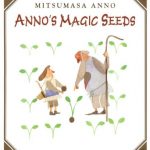
An exceptionally illustrated – and mostly wordless – picture book.
Math concepts: A range from simple counting to sophisticated geometric and algebraic reasoning
See also Anno’s Counting Book and Anno’s Mysterious Multiplying Jar.
Shota and the Star Quilt by Margaret Bateson Hill & Philomine Lakota
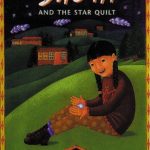
Two urban Lakota friends create a traditional star quilt.
Math Concepts: Geometry, symmetry, tessellation, rhombus, fractions/decimals, proportional reasoning, multiplication, patterning and algebra
See also Sweet Clara and the Freedom Quilt (Hopkinson, 1993); The Keeping Quilt (Polacco, 1988); The Patchwork Path: A Quilt Map to Freedom (Stroud, 2005)
One Grain of Rice: : A mathematical folktale by Demi
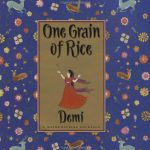
Exponential growth gets the better of a despotic rajah in this beautifully told folk tale from India.
Math concepts: Algebraic thinking, growing patterns, doubling, numbers and operations, equations, functions
See also The King’s Chessboard (Birch, 1988); The Rajah’s Rice (Barry, 1994)
Two of Everything by Lily Toy Hong
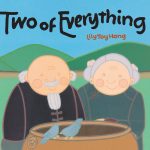
In this folk tale retelling from Korea, a magic pot doubles whatever falls into it, producing chaos and hilarity.
Math Concepts: Doubling, multiplying, adding, growing patterns, algebraic thinking, functions, equations
The World in a Second by Isabel Minhos Martins & Bernardo Carvalho
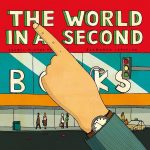
What happens in a second at the same moment of time in different settings across the world?
Math concepts: Time, measurement, mapping, rates and proportions, number sense, perspective-taking
See also Just a Second (Jenkins, 2011); The Day Time Stopped (Rutolo, 2021); Time is a Flower (Morstad, 2021)
The Warlord’s Puzzle by Virginia Pilegard & Nicolas Debon
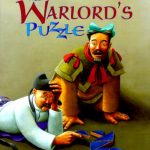
A ceramic tile intended for a warlord is dropped and smashed in this tale from China about the origins of tangrams.
Math Concepts: Spatial reasoning, geometry, squares, tangrams, congruence, mental rotation, puzzles
See also Grandfather Tang’s Story (Tompert, 1990); other Warlord books
Counting Crocodiles by Judy Sierra & Will Hillenbrand
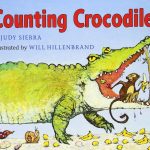
A trickster tale in rhyme that invites a range of mathematical problem-solving from kindergarten counting to middle school algebra.
Math Concepts: Counting, adding, growing/shrinking patterns, algebraic thinking, skip counting, geometric numbers
One Well: The Story of Water on Earth by Rochelle Strauss & Rosemary Woods
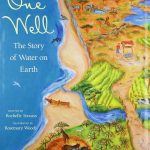
Real data shows how much everything depends on water, with strong environmental and social justice implications.
Math Concepts: Measurement, volume, statistics and data management. money, numbers and operations
See also What the World Eats (D’Alusio, 2008); If the World Were a Village (Smith, 2002)
The Two Foolish Cats by Yoshika Uchida
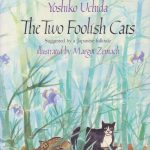
Retelling of a Japanese folktale about two greedy quarrelling cats and the wise but wily monkey who helps them divide up two rice cakes of different sizes.
Math Concepts: Fractions, equality, measurement
One Riddle, One Answer by Lauren Thompson & Linda S Wingerter
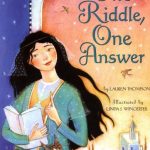
A princess in ancient Persia poses a mathematical riddle to weed out suitors.
Math Concepts: Fractions, place value, counting, multiplication, number systems, reasoning.
Nine-In-one Grr! Grr! a Folktale from the Hmong people of Laos by Blia Xiong, Cathy Spagnoli & Nancy Hom
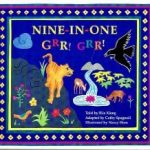
A clever bird plays a mathematical trick to ensure that tigers don’t overtake the world.
Math Concepts: Numbers and operations, growing patterns, exponential growth, algebraic reasoning

Author
Julie Comay
Faculty in the Master of Arts in Child Study and Education program and former elementary teacher at the Dr. Eric Jackman Institute of Child Study

Love this article! I have really seen the benefits of incorporating narratives into primary math lessons.